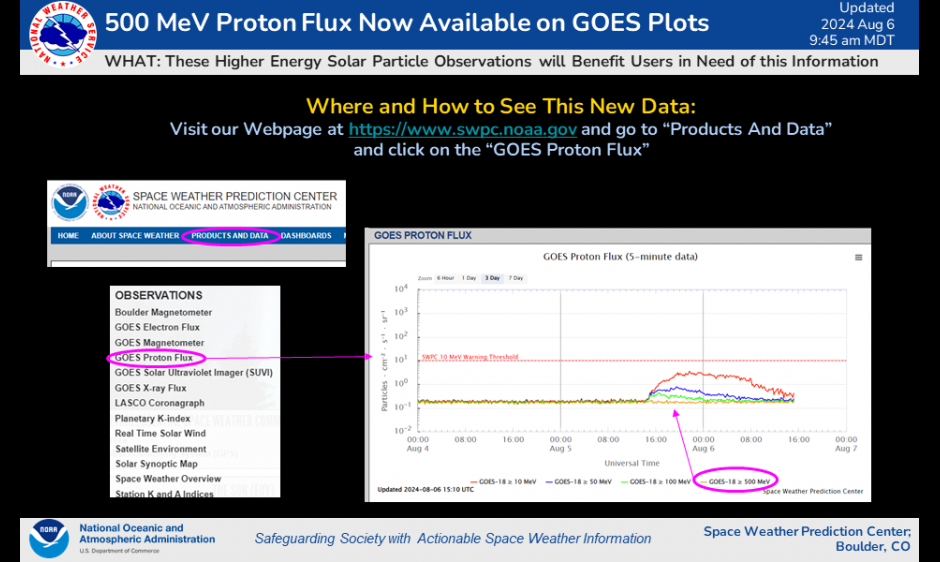
The National Weather Service (NWS) Space Weather Prediction Center (SWPC) has deployed an update to the observed Geostationary Orbiting Environmental Satellite (GOES) Proton Flux plots displayed on the SWPC website. This update added the GOES >= 500 MeV proton flux to the time series plot, and will benefit users with an interest in the high energy proton flux. For example, users in the aviation industry will be able to monitor for the enhancement of radiation dose rates at aviation flight levels for whom the >= 500 MeV proton flux is pertinent for assessing exposure. In addition, users associated with the conduct of human space exploration will be able to monitor for potential radiation impacts to astronauts and hardware. As always, visit our webpage for the latest information, forecasts, and updates.